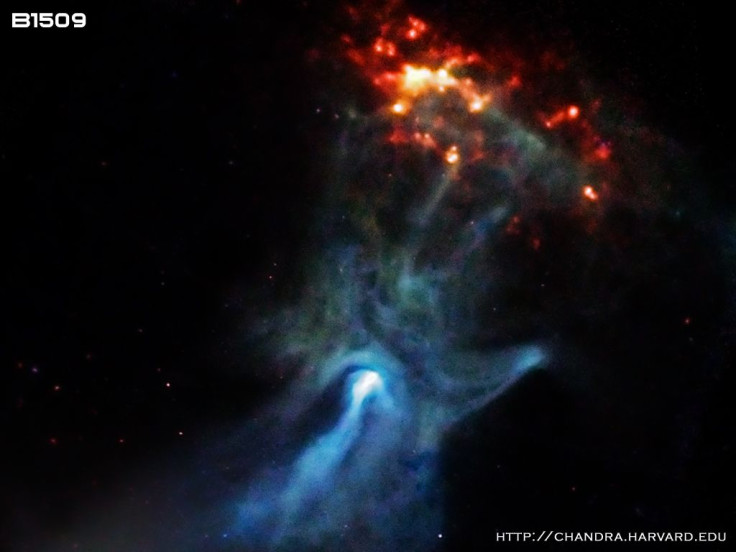Strange Pulsar Appears Like A Creepy Ghost Hand In Space

KEY POINTS
- NASA shared an image of a pulsar that looks like a cosmic hand
- B1509 was formed after a star died and went supernova
- The features of B1509 are energizing a nearby gas cloud
NASA recently shared a haunting image of a pulsar that strangely resembles a massive ghostly hand reaching out in space. According to the agency, the peculiar cosmic structure was created by a star that died and went supernova.
The main subject of NASA’s photo has been identified as pulsar known as PSR B1509-58 or B1509. It sits about 17,000 light-years away in the Circinus constellation.
The photos of B1509 were taken using the X-ray imaging capabilities of NASA’s various facilities such as the Nuclear Spectroscopic Telescope Array and the Chandra X-ray Observatory.
As explained by NASA, B1509 was formed following the death and explosion of a star. This stellar object, which is about 12 miles in diameter, became a neutron star after it ran out of fuel. This caused the star to collapse under the weight of its own gravity.
Despite its death, the star is still spinning at an incredible rate, which is at around 7 times per second. Its movement, combined with its stellar explosion, ejected a cloud of materials into its surroundings, which formed into a giant cosmic hand.
“It rapidly spins around, seven times per second, firing out a particle wind into the material around it -- material that was ejected in the star's explosion,” NASA explained in a statement. “These particles are interacting with magnetic fields around the material, causing it to glow with X-rays. The result is a cloud that, in previous images, looked like an open hand.”
As seen in the photo, the cosmic hand appears to be reaching out to a neighboring structure in space. According to NASA, the structure near B1509 is a cloud of gas known as RCW 89. In the photo, the gas cloud can be seen with a bright reddish glow. As noted by the agency, B1509 is responsible for the appearance of RCW 89.
Through its finger-like features that extend into the gas cloud, B1509 is energizing RCW 89.
“Finger-like structures extend to the north, apparently energizing knots of material in a neighboring gas cloud known as RCW 89,” NASA stated. “The transfer of energy from the wind to these knots makes them glow brightly in X-rays (orange and red features to the upper right).”
© Copyright IBTimes 2025. All rights reserved.





















